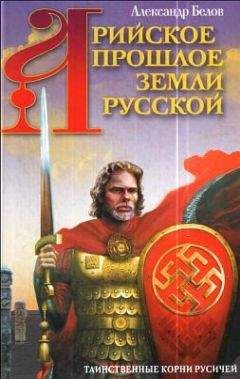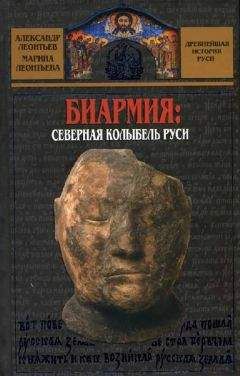David Wallace - Infinite jest
I could barely recall the ‘98 blizzard. The Academy had been open for only a few months. I remember the edges of the shaved hilltop were still square and steep and striped in sedimentary layers, final construction delayed by some nasty piece of litigation from the VA hospital below. The storm came barrelling in southeast from Canada in March. Dwight Flechette and Orin and the other players had had to be led to the Lung roped together, single file, Schtitt in the lead carrying a highway flare. A couple photos hung in C.T.’s waiting room. The last boy along the rope disappeared into a forlorn gray whirl. The Lung’s new bubble had had to be taken down and fixed when snow-weight stove it in on one side. The T stopped running. I remember some of the younger players had cried and sworn up and down that the blizzard wasn’t their fault. For days snow churned steadily out of a graphite sky. Himself had sat in a spindle-backed chair, at the same living-room window C.T. now uses for advanced worry, and aimed a series of nondigital cameras at the mounting snow. After years in which his consuming obsession was the establishment of E.T.A., Orin said, Himself had started in with the film-obsession almost immediately after the Academy was up and running. Orin has said the Moms had assumed the film thing was a passing obsession. Himself had seemed interested mostly in the lenses and rasters[380] at first, and in the consequences of their modification. He sat in that chair throughout the whole storm, sipping brandy from a one-handed snifter, his long legs not quite covered by a plaid blanket. His legs had seemed to me almost endlessly long back then. He always seemed to be right on the edge of coming down with something. His record up until then indicated that he remained obsessed with something until he became successful at it, then transferred his obsession to something else. From military optics to annular optics to entrepreneurial optics to tennis-pedagogy to film. In the chair during the blizzard he’d had beside him several different types of camera and a large leather case. The inside of the case was striated with lenses down both sides. He used to let Mario and me put different lenses in our eyes and squint to hold them, imitating Schtitt.
One way of looking at the film-obsession’s endurance is that Himself was never really successful or accomplished at filmmaking. This was something else on which Mario and I had agreed to disagree.
It took almost a year to complete the move from Weston to E.T.A. The Moms had attachments in Weston and she drew things out. I was pretty small. I lay flat on my back on our room’s carpet and tried to recall details of our home in Weston, twidgeling the TP’s remote with my thumb. I do not have Mario’s head for remembered detail. One dissemination-track simply panned the metro-Boston sky and horizons from atop the Hancock tower. On the FM band, WYYY was apparently doing its weather-report via mimesis, broadcasting raw static while the student staff doubtless did bongs in celebration of the storm and then went up sliding around the Union’s cerebral rooftop. The Hancock camera’s pan included the sinciput of the M.I.T. Union, its roof’s convolutions filling with snow ahead of the rest of it, creepy filigrees of white against the roof’s deep gray.
Our subdorm room’s only carpet was an oversized corruption of the carpet page from the Lindisfarne Gospels in which you had to look very closely to make out the tiny pornographic scenes in the Byzantine weave surrounding the cross. I’d acquired the carpet years ago during a period of intense interest in Byzantine pornography inspired by what I’d seen as a titillating reference in the O.E.D. I too had moved serially between obsessions, as a child. I adjusted my angle on the carpet. I was trying to align myself along some sort of grain in the world I could barely feel, since Pemulis and I stopped. Meaning the grain, not the world. I realized I could not distinguish my own visual memories of the Weston house from my memories of hearing Mario’s detailed reports of his memories. I remember a late-Victorian three-level on a low quiet street of elms, hyperfertilized lawns, tall homes with oval windows and screen porches. One of the street’s homes had a pineapple finial. Only the street itself was low; the lots were humped up high and the houses so tall the broad street seemed nevertheless constricted, a sort of affluence-flanked defile. It seemed always to be summer or spring. I could remember the Moms’s voice high overhead at a screen-porch door, calling us in as dusk drifted down and leaded fanlights began to light up at homes’ doors in some sort of linear sync. Either our driveway or another driveway flanked with whitewashed stones the shapes of beads or drops. The Moms’s intricate garden in a backyard enclosed by a fencework of trees. Himself on the screen porch, stirring a gin and tonic with his finger. The Moms’s dog S. Johnson, not yet neutered, confined by psychosis in a sort of large fenced pen abutting the garage, running around and around the pen when thunder sounded. The smell of Noxzema: Himself behind Orin in the upstairs bathroom, towering over and down, teaching Orin to shave against the grain, upward. I remember S. Johnson leaping up on his hind legs and sort of playing the fence with his paws as Mario approached the pen: the rattling chain-link’s pitch. The circle of earth worn bare by S.J.’s orbit in the pen when thunder sounded or planes crossed overhead. Himself sat low in chairs and could cross his legs and still have both feet flat on the floor. He’d hold his chin in his hand while he looked at you. My memories of Weston seemed like tableaux. They seemed more like snapshots than films. A weird isolated memory of summertime gnats knitting the air above the shaggy animal-head of a neighbor’s topiary hedge. Our own round shrubs trimmed flat as tabletops by the Moms. More horizontals. The chatter of hedge-clippers, their power-cords bright orange. I had to swallow spit with almost every breath. I remembered climbing with a dawdler’s heavy tread the cement steps up from the street to a gambrel-roofed late-Victorian whose narrow height from the steps gave it the distended look of thick liquid hanging: gingerbread eaves, undulate shingles of weathered red, zinc gutters the Moms’s graduate students came and kept clean. A blue star in the front window and the words BLOCK MOTHER, which had always suggested either a rectangular woman or some type of football-crowd cheer. The inside cool and dim and a smell of Lemon Pledge. I had no visual memories of my mother without white hair; all that varied was the length. A touch-tone phone, with a cord running into the wall, on a horizontal surface in a recessed alcove near the front door. Cork floors and pre-mounted shelving of woody-smelling wood. The chilling framed print of Lang directing Metropolis in 1924.[381] A hulking black chest with strap-hinges of brass. A few of Himself’s old heavy tennis trophies as bookends on the mounted shelving. An étagère filled with old-fashioned magnetic videos in bright adverting boxes, a cluster of blue-and-white delfts on the étagère’s top shelf that had dwindled as one figurine after another got knocked off by Mario, stumbling or shoved. The blue-white chairs with the protective plastic that made your legs sweat. A divan done in some sort of burlapesque Iranian wool dyed to the color of sand mixed with ash — this may have been a neighbor’s divan. Some cigarette burns in the fabric of the divan’s arms. Books, videotapes, kitchen’s cans — all alphabetized. Everything painfully clean. Several spindle-backed captain’s chairs in contrasting fruit-woods. A surreal memory of a steamed lavatory mirror with a knife sticking out of the pane. A massive stereo television console of whose gray-green eye I was afraid when the television was off. Some of the memories have to be confabulated or dreamed — the Moms would never have had a divan with burns in it.
A picture window east, the direction of Boston, with claret-colored figures and a blue sun all suspended in a web of lead. The candy-colored summer sunrise through that window as I watched television in the A.M.
The tall thin quiet man, Himself, with his razor-burn and bent glasses and chinos too short, whose neck was slender and shoulders sloped, who slumped in candied east-window sunlight with his tailbone supported by windowsills, meekly stirring a glass of something with his finger while the Moms stood there telling him she’d long-since abandoned any reasonable hope that he could hear what she was telling him — this silent figure, of whom I still remember mostly endless legs and the smell of Noxzema shave-cream, seems, still, impossible to reconcile with the sensibility of something like Accomplice! It was impossible to imagine Himself conceiving of sodomy and razors, no matter how theoretically. I lay there and could almost remember Orin telling me something almost moving that Himself had once told him. Something to do with Accomplice! The memory hung somewhere just out of conscious reach, and its tip-of-the-tongue inaccessibility felt too much like the preface to another attack. I accepted it: I could not remember.
Off down the Weston street a church with an announcement-board in the grass out front — white plastic letters on a slotted black surface — and at least once Mario and I stood watching a goatish man change the letters and thus the announcement. One of the first occasions where I remember reading something involved the announcement-board announcing:
LIFE IS LIKE TENNIS THOSE WHO SERVE BEST USUALLY WIN
with the letters all spaced far out like that. A big fresh-cement-colored church, liberal with glass, denomination not recalled, but built in what was, in the B.S. 8O’s probably, modern — a parabolic poured-concrete shape billowed and peaked like a cresting wave. A suggestion in it of some paranormal wind somewhere that could make concrete billow and pop like a tucking sail.
Our own subdorm room now has three of those old Weston captain’s chairs whose backs dent your spine if you don’t fit it carefully between two spindles. We have an unused wicker basket for laundry on which are stacked some corduroy spectation-pillows. Floor plans for Hagia Sophia and S. Simeon at Qal’at Si’man on the wall over my bed, the really prurient part of Consummation of the Levirates over the chairs, also from the old interest in Byzantinalia. Something about the stiff and dismantled quality of maniera greca porn: people broken into pieces and trying to join, etc. At the foot of Mario’s bed a surplus-store trunk for his own film equipment and a canvas director’s chair where he’s always laid out his police lock, lead weights, and vest for the night. A fiberboard stand for the compact TP and viewer, and a stenographer’s chair for using the TP to type. Five total chairs in a room where no one ever sits in a chair. As in all the subdorm rooms and hallways, a guilloche ran around our walls half a meter from the ceiling. New E.T.A.s always drove themselves bats counting their room’s guilloche’s interwoven circles. Our room had 811 and truncated bits of -12 and -13, two left halves stuck like open parentheses up in the southwest corner. Between the ages of eleven and thirteen I’d had a plaster knock-off of a lewd Constantine frieze, the emperor with a hyperemic organ and an impure expression, hung by two hooks from the guilloche’s lower border. Now I couldn’t for the life of me recall what I’d done with the frieze, or which Byzantine seraglio the original had decorated. There had been a time when data like these were instantly available.
The Weston living room had had an early version of Himself’s full-spectrum cove lighting and at one end an elevated fieldstone fireplace with a big copper hood that made a wonderful ear-splitting drum-head for wooden spoons, with memories of some foreign adult I didn’t recognize grinding at her temples and pleading Do Stop. The Moms’s jungle of Green Babies had spread out into the room from another corner, the plants’ pots on stands of various heights, hanging in nests of twine suspended from clamps, arrayed at eye-height from projecting trellises of white-painted iron, all in the otherworldly glow of a white-hooded tube of ultraviolet light hung with thin chains from the ceiling. Mario can recall violet-lit laces of ferns and the wet meaty gloss of rubber-tree leaves.
And a coffee table of green-shot black marble, too heavy to move, on whose corner Mario knocked out a tooth after what Orin swore up and down was an accidental shove.
Mrs. Clarke’s varicotic calves at the stove. The way her mouth overhead would disappear when the Moms reorganized something in the kitchen. My eating mold and the Moms’s being very upset that I’d eaten it — this memory was of Orin’s telling the story; I had no childhood memory of eating fungus.
My trusty NASA glass still rested on my chest, rising when my rib cage rose. When I looked down my own length, the glass’s round mouth was a narrow slot. This was because of my optical perspective. There was a concise term for optical perspective that I again could not quite make resolve.
What made it hard really to recall our old house’s living room was that so many of its appointments were now in the living room of the Headmaster’s House, the same and yet altered, and by more than rearrangement. The onyx coffee table Mario had fallen against (specular is what refers to optical perspective; it came to me after I stopped trying to recall it) now supported compact disks and tennis magazines and a cello-shaped vase of dried eucalyptus, and the red-steel stand for the family Xmas tree, when in season. The table had been a wedding gift from Himself’s mother, who died of emphysema shortly before Mario’s surprise birth. Orin reports she’d looked like an embalmed poodle, all neck-tendons and tight white curls and eyes that were all pupil. The Moms’s birth-mother had died in Quebec of an infarction when she — the Moms — was eight, her father during her sophomore year at McGill under circumstances none of us knew. The hydrant-sized Mrs. Tavis was still alive and somewhere in Alberta, the original L’Islet potato farm now part of the Great Concavity and forever lost.
Orin and Bain et al. at Family Trivia during that terrible first year’s blizzard, Orin imitating the Moms’s high breathy ‘My son ate this! God, please!’ never tiring of it.
Orin had liked also to recreate for us the spooky kyphotic hunch of Himself’s mother, in her wheelchair, beckoning him closer with a claw, the way she seemed always caved in over and around her chest as if she’d been speared there. An air of deep dehydration had hung about her, he said, as if she osmosized moisture from whoever came near. She spent her last few years living in the Marlboro St. brownstone they’d had before Mario and I were born, tended by a gerontologic nurse Orin said always wore the expression of every post-office mug shot you’ve ever seen. When the nurse was off, a small silver bell was apparently hung from an arm of the old lady’s wheelchair, to be rung when she could not breathe. A cheery silver tinkle announcing asphyxiation upstairs. Mrs. Clarke would still pale whenever Mario asked about her.
It’s become easier to see the climacteric changes in the Moms’s own body since she began confining herself more and more to the Headmaster’s House. This occurred after Himself’s funeral, but in stages — the gradual withdrawal and reluctance to leave the grounds, and the signs of aging. It is hard to notice what you see every day. None of the physical changes has been dramatic — her nerved-up dancer’s legs becoming hard, stringy, a shrinking of the hips and a girdly thickening at the waist. Her face settles a little lower on her skull than it did four years ago, with a slight bunching under the chin and an emerging potential for something pruny happening around her mouth, in time, I thought I could see.




